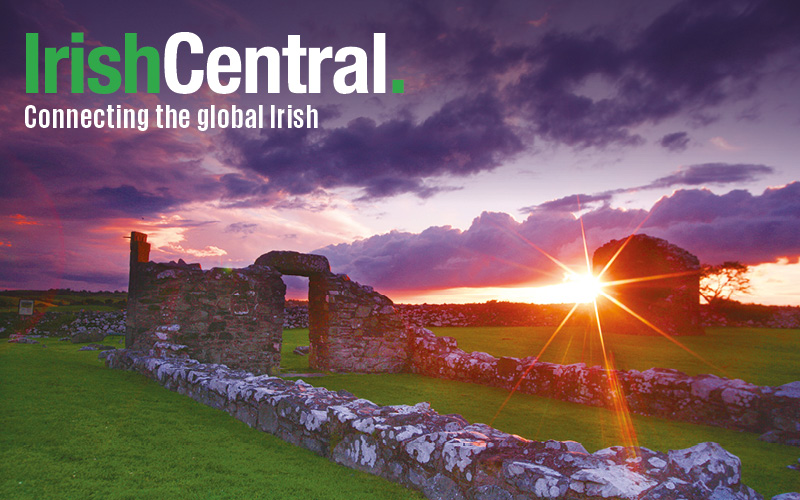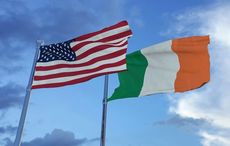The last battle of the United Irishman-led rebellion of 1798 was not fought, by Irishmen or even on an Irish battlefield, but at sea, off the stormy waters of Tory Island in a naval engagement between the French and British navies. History records this as the battle of Tory Island.
Tory Island, or simply Tory (officially known by its Irish name Toraigh), lies in the wild Atlantic nine miles off the northwest coast of County Donegal.
It is a small island measuring just three miles in length and one mile across at its widest point. It is steeped in history, music, song, and dance with breath-taking views and is now a popular tourist destination.
Tory Island through Ireland's history
Tory is mentioned numerous times in Lebor Gabála Érenn, which is the apocryphal history of Ireland. Tory Island was the site of Conand's Tower, the stronghold of the Fomorians, who were a group of deities who represented the harmful or destructive powers of nature and were personifications of chaos, darkness, death, blight, and drought. They were also feared sea-pirates.
Read more: A "cracked" urban tale from Dublin's Royal College of Surgeons
The most famous of these on Tory was the Fomorian king Balor of the evil eye, who imprisoned his beautiful daughter Ethlinn in a tower built on Tor Mór, the island's highest point. This was to stop her from bearing a child, who was prophesied as being the only person who could kill Balor.
A monastery was then founded on Tory in the 6th century by St Colmcille.
This dominated life on the island until 1595, when it was destroyed and pillaged by English troops, waging a war of subjugation against local Gaelic chieftains. The monastery's bell tower is the largest structure to survive and was built in the 6th or 7th century.
In 1608, the Siege of Tory Island took place, this was one of the final incidents of the O'Doherty's rebellion. Fleeing the mainland a group of rebels took shelter on the Island, only to begin killing each other in order to secure a pardon.
The United Irishmen with the Battle of Tory Island
190 years later another rebellion was about to end in failure, that of the United Irishmen with the Battle of Tory Island, the last action in the struggle of the uprising of 1798.
The rebellion of 1798 was led by the United Irishmen, a republican revolutionary group heavily influenced by the philosophy of the leaders of the American and French revolutions.
The United Irishmen were largely Presbyterians aggrieved at being kept out of positions of power by the Anglican Irish establishment. They were supplemented by disenfranchised Catholics who made up the majority of the Irish population.
The British under General Cornwallis (famous for surrendering to the American revolutionaries at York’s Town, to effectively end the American war of Independence) quickly defeated the main elements of the rebellion.
On the 22nd of August a full two months after the rebellion had all but petered out the French surprised the British by landing 1,000 troops under the command of General Humbert at Kilcummin in County Mayo. Humbert was joined by 5,000 local troops and inflicted a humiliating defeat on the British force at Castlebar, which later became known as the Castlebar Races, such was the speed of the crown forces retreat.
The French
Despite ending Humberts' campaign at the battle of Ballinamuck in County Longford on the 8th of September, the British had been spooked at the ease at which the French had landed in Mayo. They decided to monitor the French fleet closely, to ensure no other French troops could aid the now crumbling rebellion.
The French, unaware of Humbert’s defeat, sent a small fleet of eight frigates led by the battleship Hoche and 3000 men under the command of Commodore Jean-Baptiste-François Bompart.
They were accompanied by the leading Irish revolutionary figure and one of the founding members of the United Irishmen, Theobald Wolfe Tone. He was serving as a gunnery officer aboard the flagship of the fleet, the Hoche.
The French fleet left Brest on the evening of the 16th of September. The plan was to land troops in Donegal to reinforce what they assumed to be a victorious Humbert, whom they hoped would now be sweeping through Connaught into Ulster.
The British Channel fleet was now on full alert to ensure no other French army would land by surprise in Ireland.
This meant that despite Bompart’s fleet beginning their voyage under the cover of darkness, they were soon spotted by a British frigate squadron led by HMS Boadicea, captained by Richard Keats.
He quickly set 2 of his ships, the frigates the Ethalion and the Sylph to follow the French while he rendezvoused with the main body of the Channel fleet, commanded by Admiral Sir John Borlase Warren.
The French were chased for a week into the Atlantic Ocean until they managed to lose the British in stormy seas.
This extreme weather was to continue throughout the campaign, damaging ships on both sides and it would have a decisive impact on the final battle.
The British soon sent a Naval Squadron under Admiral Warren to the Donegal coast in search of the French fleet now heavily damaged by rough seas.
The Battle
The British finally caught up with the French off the North West of Donegal, on the morning of the 12th of October 1798. The French commander Bompart now found himself surrounded on all sides by a vastly superior British force and the Battle of Tory Island was about to begin.
The French fleet tried to make a run for it and went under full sail, but the British were soon in hot pursuit and gaining ground. Bompart the French commander tried to distract the British by ordering the weather damaged frigate Résolue to be beached on Tory, but the commander ignored the order, perhaps thinking capture was better than the danger of beaching on Tory in atrocious conditions.
Bompart asked Wolfe Tone if he would like to embark on one of the faster frigates and perhaps secure his freedom. Tone bravely refused and decided to stay and fight.
Bompart now had no other option than to attack the British fleet head-on and hope that some of his fleet could punch a way through and escape the British guns, which were now bearing down on them.
However, the French faced a fine seaman in Admiral Warren and he had his own plan of action prepared.
At 7.00 on the morning of 12th October, Admiral Warren ordered the British warship Robust to head straight for the French ship Roche, while the British ship Magnanime engaged the French frigates Immortalité, Loire, and Beltone.
This clever maneuver created space for the British warships Ethalion, Melampus and Amelia to concentrate fire on the French flagship the Hoche, which was now isolated and vulnerable.
Surrender
The Hoche was heavily storm damaged, having lost a topmast earlier. When the British realized just how badly damaged the Hoche was, they began to rain down a volley of shells.
Less than four hours after it had started the Battle of Tory Island was over when the Hoche surrendered at 10.50am. She was drifting low in the water and 250 of its crew were either dead or seriously injured.
Wolfe Tone’s mission had failed, the French flagship and four Frigates were captured, while the surviving French ships ran scattered around the Donegal coast trying to make to safety.
The prisoners were landed at Buncrana in Lough Swilly, which was used as a British naval base until the final surrender of the Treaty ports in 1938.
The final blow for the United Irishmen came with the arrest of Wolfe Tone who was recognized by Sir George Hill. Tone was identified dressed in a French adjutant-general's uniform in Lord Cavan’s home in Letterkenny.
Tone was immediately arrested on charges of treason and sent to Dublin for trial. He was sentenced to death but mysteriously committed suicide before the sentence could be carried out.
The remaining French frigates desperately evaded the pursuing British naval squadron as they tried to reach the safety of French-controlled harbors. Of the six French vessels the British captured three and the others made it to safety. The losses at the Battle of Tory Island ensured that never again would the French attempt an invasion of Ireland.
The British victory in the Battle of Tory Island finally ended the United Irishman rebellion of 1798. The losses faced by the Irish forces during the rebellion coupled with the reprisals meted out by the British against anyone who had aided the uprising ensured that the flame of rebellion was extinguished in Ireland for many years.
The victors of the Battle of Tory Island were well rewarded monetarily with the proceeds from selling the captured French ships. The Hoche was renamed HMS Donegal and Admiral Warren received the thanks of parliament and many junior officers were promoted.
In 1847 the battle was among the naval engagements recognized by the clasp, "12th October 1798", attached to the Naval General Service Medal, awarded to all the surviving British participants of the Battle of Tory Island.
Read more: The Co Clare man who tried to steal the British Crown Jewels
This article was submitted to the IrishCentral contributors network by a member of the global Irish community. To become an IrishCentral contributor click here.




Comments